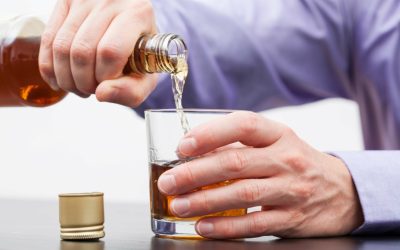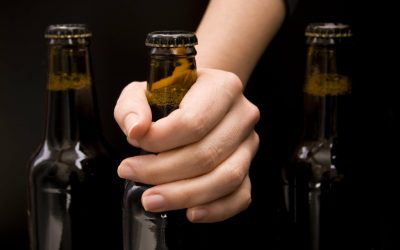Genetics also increase the likelihood of an addiction by about 50 percent, according to the American Society of Addiction Medicine. This is why a person who misuses drugs eventually feels flat, without motivation, lifeless, and/or depressed, and is unable to enjoy things that were previously pleasurable. Now, the person needs to keep taking drugs to experience even a normal level of reward—which only makes the problem worse, like a vicious cycle. Also, the person will often need to take larger amounts of the drug to produce the familiar high—an effect known as tolerance. However, there are a number of personality traits, each of which is partly genetically influenced, that contribute to the risk of addiction. These include impulsiveness, frustration tolerance, and sensitivity to rejection.
Marijuana Abuse

This interference explains why overdoses can cause depressed breathing and death. Just as recovery from addiction requires focusing on rewarding activities other than drug use, so does prevention. Neuroscience research supports the idea that addiction is a habit that becomes deeply entrenched and self-perpetuating, rewiring the circuitry of the brain as it is repeated. The repetition of a highly pleasurable experience—drugs, gambling—alters neurons; they adjust their wiring to become increasingly efficient at the experience.
Stop Overdose
If you’re currently using a substance regularly and are concerned it’s turning into a habit you’re unable to stop on your own, talk to a healthcare provider. A provider can also give you guidance on how to have a conversation with your children about SUD and get them help if you think they’re at risk. Medications can help modify your brain chemistry to help treat certain SUDs.
How do people take methadone?
A widely used clinical tool is the Addiction Severity Index, which provides a broad view of problems related to substance use. Problems are rated on a scale of 1 to 5 by domain, reflecting how bothered a person is by problems of that type. The ASI is typically used in gauging the type and intensity of treatment a person might need and as a measure of the success of treatment. There is an important distinction between drug addiction vs. drug dependence. The term dependence refers to the fact that the brain has adapted physiologically to the substance of abuse.
Although historically higher illicit drug usage has been observed in urban centers, rural areas have faced unique substance challenges – particularly opioids. The best outcomes occur when individuals remain in treatment longer Alcoholics Anonymous and have access to continuing care. Despite men’s higher overall usage, both genders require support structures that address specific risk factors, treatment adherence, and relapse triggers. Socioeconomic status is strongly linked to substance abuse vulnerability, emphasizing that broader social conditions must be addressed alongside clinical interventions. Regional variation is influenced by factors like drug availability, cultural norms, and access to treatment.
- Family support can also be one of the strongest protective factors in treatment.
- It is marked by hallucinations and other signs of psychosis, difficulties with memory, and confabulation, attempts to make up stories to cover gaps in memory.
- It can significantly impact your emotional well-being, relationships, education and career.
- Because of this, many people who use heroin may continue using it to avoid feeling sick.
How does GHB make people feel?
They have the potential to change a person’s sense of reality, leading them to see, hear, and feel things that are not happening in real life, or to experience reality in a different way. Prescription drugs are prescribed (ordered) by a health care provider, bought at a pharmacy, prescribed for and intended to be used by one person, and regulated by the FDA. NBOMes (N-Benzylphenethylamines) are lab-made (synthetic) chemical compounds originally developed for use in brain research. They are sometimes sold as LSD but are more potent with higher risk of severe effects. It is chemically similar to prescription sedatives, but flunitrazepam is not FDA-approved for medical use in the United States. Outside the United States, flunitrazepam is prescribed to treat insomnia.
- Examples include methylenedioxymethamphetamine, also called MDMA, ecstasy or molly, and gamma-hydroxybutyric acid, known as GHB.
- Vaping devices are battery-operated devices that people use to inhale an aerosol, which usually contains nicotine, as well as flavorings and other chemicals.
- Abuse of hallucinogens, although extremely unlikely, may in some individuals trigger delusional and other psychotic phenomena long after cessation of use.
- To a very large degree, brain hacks become appealing when there are restricted opportunities for meaning and for pleasure other than the response to drugs.
How does hydromorphone make people feel?

People who use synthetic cathinones regularly may develop stimulant use disorder. People may use illegal synthetic cathinones on purpose—sometimes as cheaper or more accessible alternatives to other drugs—or unknowingly, as contaminants in other drugs. But unlike most psychedelic or dissociative drugs that interact with serotonin receptors, it acts on a type of opioid receptors, called kappa opioid receptors.
Substance abuse
People with substance use disorder struggle to stop using the substance and often experience painful physical or psychological symptoms when they try to. SUD affects a person’s mental and physical health in profound ways. As a person becomes dependent on the substance, the substance will begin to control the person’s life. Experimenting with—or even being prescribed—a drug or substance can sometimes lead to occasional use and then to heavy use. Reoccurrence of use may happen to people who use drugs and can happen even years after not taking the substance. More than anything, reoccurrence of use may be a sign warning signs of drug use that more treatment or a different method is needed.
Meperidine is a prescription opioid pain reliever used for severe, acute pain. MDMA is a synthetic (lab-made) drug that has effects similar to stimulants like methamphetamine. However, some researchers consider MDMA to be a psychedelic drug because it can also mildly alter visual and time perception.
Are nitrites addictive?
The chronic nature of addiction means that for some people relapse, or a return to drug use after an https://thepcprinciple.com/recovery-residences-a-bridge-to-long-term-sobriety/ attempt to stop, can be part of the process, but newer treatments are designed to help with relapse prevention. Relapse rates for drug use are similar to rates for other chronic medical illnesses. If people stop following their medical treatment plan, they are likely to relapse.


Leave a Reply